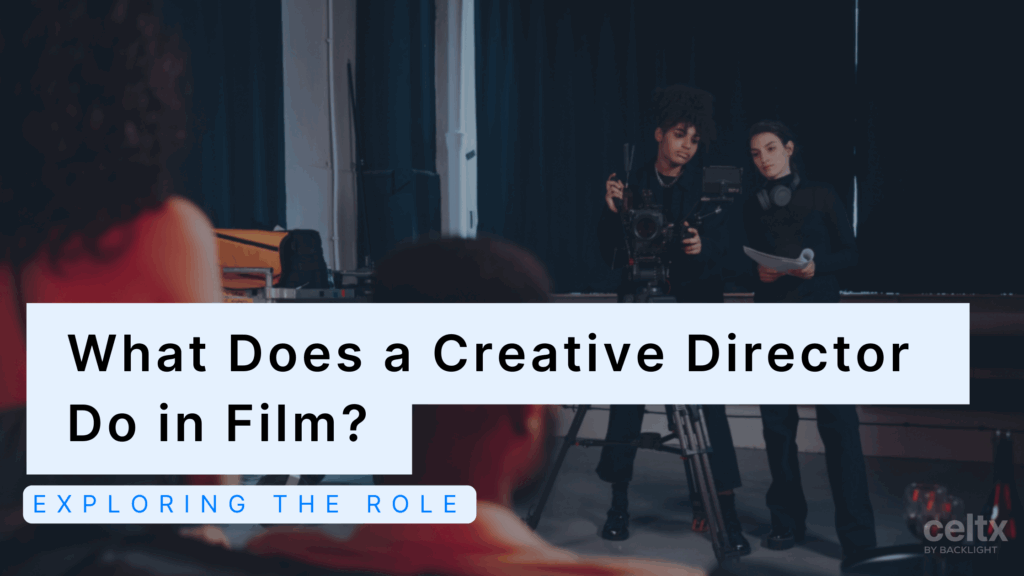
Movies are captivating. Their atmosphere, visual style and tone capture our imaginations constantly with creative directors having a key role in bringing these to life.
It’s usually the directors, producers, cinematographers, and screenwriters who are often celebrated for their contributions, while the creative director is lesser known. Well, we’re about to change that!
You may hear the term ‘creative director’ from the advertising world, but film creative directors are crucial in shaping a movie’s vision, executing artistic concepts into practice. They ensure the visual storytelling, tone, and thematic elements are cohesive from start to finish, from pre-production to final edit.
In this article, we’ll be diving into the creative director’s multi-faceted role, how they differ from other similar roles, and also give you the load down on what it takes to build a career in this challenging yet creative and rewarding field!
So, let’s go!
In This Article
- The Role of a Creative Director in Film Production
- Tools of the Trade: How Creative Directors Collaborate in Pre-Production
- Key Skills and Qualifications for Creative Directors
- Creative Director vs. Art Director vs. Production Designer
- Creative Director Career Paths: Education, Networking & Growth
- Conclusion
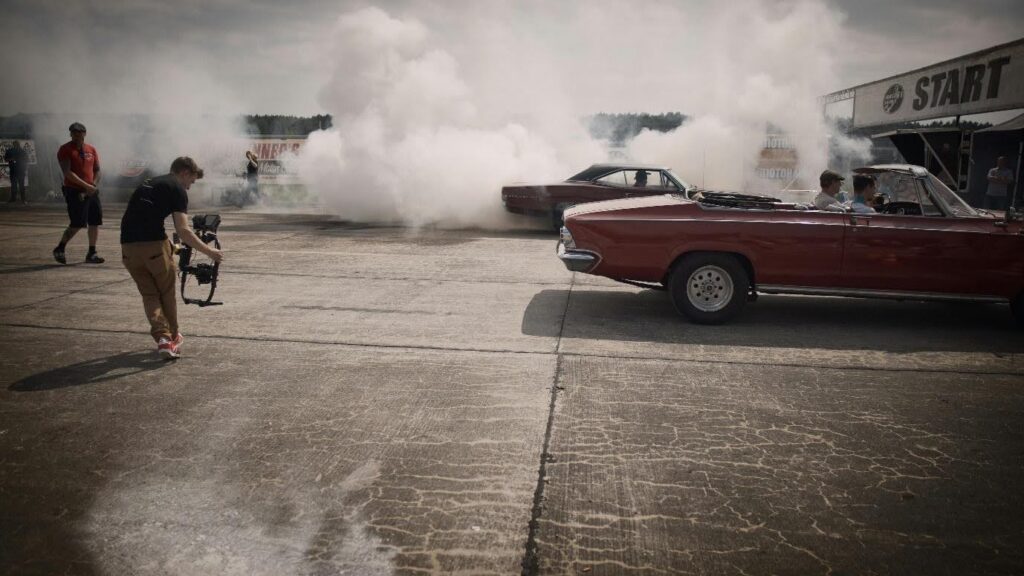
The Role of a Creative Director in Film Production
A creative director oversees the overall visual and conceptual tone of a movie.
You’ll usually find the role of creative director in larger productions or those with complex visual worlds in the fantasy, sci-fi or animation genres. They may work closely with the director, producer, production manager, and department heads to maintain a single, united creative vision.
What does the role actually entail? Let’s break it down:
1. Vision Setting
The creative director works early in the production process to help define the film’s stylistic direction. This could involve:
- Developing visual references through mood boards and tone guides.
- Helping craft a film’s lookbook.
- Inputting ideas for color schemes, lighting, set, and costume palettes.
A creative directors’ main concern is the emotional intent behind the visual choices made and ensuring all the design elements support the story, characters, and themes presented in the script.
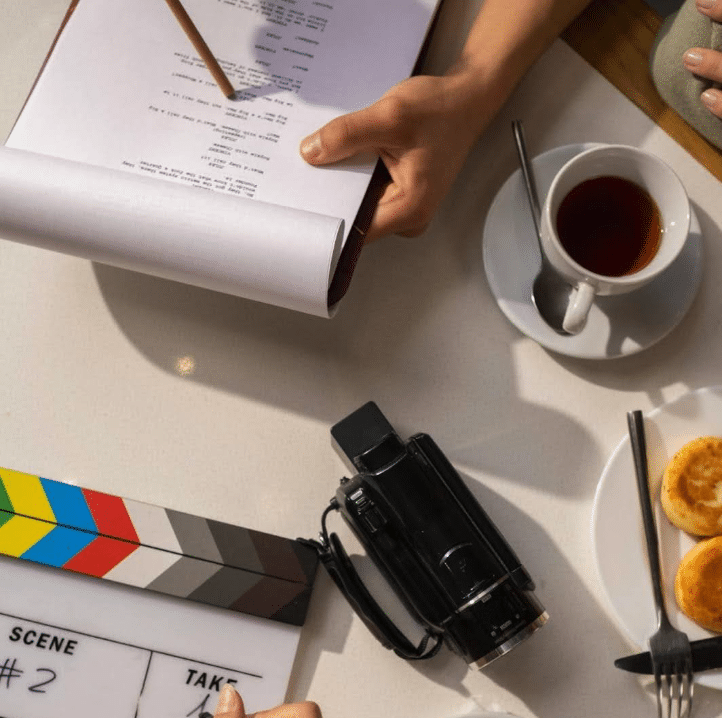
2. Collaboration with Other Departments
While many roles in a film’s production work in their specific departments, the creative director will often move between them to maintain consistency. These departments can include:
- VFX and animation
- Costume design
- Art department (sets, props etc.)
- Cinematography
By moving between departments, the creative director can make sure the different elements of a movie harmonize instead of conflict. It also means they need to be diplomatic and have stellar communication skills alongside their creative talent.
3. Quality Control
The creative director’s job doesn’t stop when a movie starts shooting. During filming, they will also help guide the execution of the visual concepts they’ve worked on. They do this by:
- Approving or tweaking set designs and props.
- Reviewing VFX test shots.
- Ensuring post-production color grading matches the original tone of the script.
In short, they make sure the film’s overall visuals don’t drift along the way.
Use Celtx to manage your cast, crew, and call sheets — all in the cloud.
Get started now.
Tools of the Trade: How Creative Directors Collaborate in Pre-Production
Let’s return to pre-production for a moment. While a creative director’s job doesn’t end the moment shooting begins, it’s in pre-production where they truly shine, and their input has the greatest impact on the film’s visual identity.
Here’s a deeper look into how a creative director contributes to the pre-production process.
Mood Boards and Look Books
In the early stages of production, tone and textures need to be established. Visual tools like Pinterest, Milanote and Adobe Creative Suite are valuable resources used to assemble ideas and unify the creative team’s vision prior to shooting.
Storyboards and Concept Art
Creative directors will collaborate with illustrators or story artists on storyboards, working to ensure the ideas finalized on the mood boards and look books are translated into the early visuals.

Virtual Production and Previsualization (Previs)
When it comes to the movies that require more high-tech environments like green screens or digital sets, creative directors have a little more to do.
In this case, they’ll need to collaborate with 3D artists, mock up scenes with previs teams before filming, and utilize VR tools to explore set layouts or camera paths.
Collaborative Meetings
With film production also comes a lot of meetings! Here, the creative director will act as a creative translator, ensuring the costume designer, cinematographer, and VFX lead are all aiming towards the same emotional and visual goals.
Creative Director vs. Art Director vs. Production Designer
With no movie set being the same, it’s easy for job titles and their roles to merge. In this case, it’s easy to confuse the creative director with the art director or production designer. We’ve all seen each one of these rolls pop up in a film’s credits, but what sets them apart from each other?
Let’s dispel the confusion!
| Creative Director | Art Director | Production Designer |
| Focuses on the bigger picture visual and emotional tone of a project. | Tactical, hands-on role within the art department, managing teams, building schedules and overseeing the practical coordination. | Responsible for the physical visual environment including props, locations, and sets. |
| Often work across the different departments, reporting mainly to the director or producer. | Implements the vision determined by the production designer and creative director. | Collaborates directly with the Director of Photography (DOP) and oversees the Art Director. |
On smaller projects, it’s not uncommon for these roles to overlap, but on larger-scale movies, you’ll fine each is clearly defined and hierarchically structured.
Key Skills and Qualifications for Creative Directors
Has all of this inspired you? Well, being a creative director isn’t just about having a keen eye for design or having a good taste. It requires a unique blend of artistic talent, leadership and strong knowledge of the film industry.
So, what exactly is the secret sauce to being a successful creative director? Here are four key attributes you need:
1. Visual Literacy
What this means is you’ll need a good understanding of composition, color theory, cinematography and design principles. In short, you need many strings to your bow!
You’ll also be adept at analyzing and creating visual styles from a range of media including film, photography, fine art, and architecture.
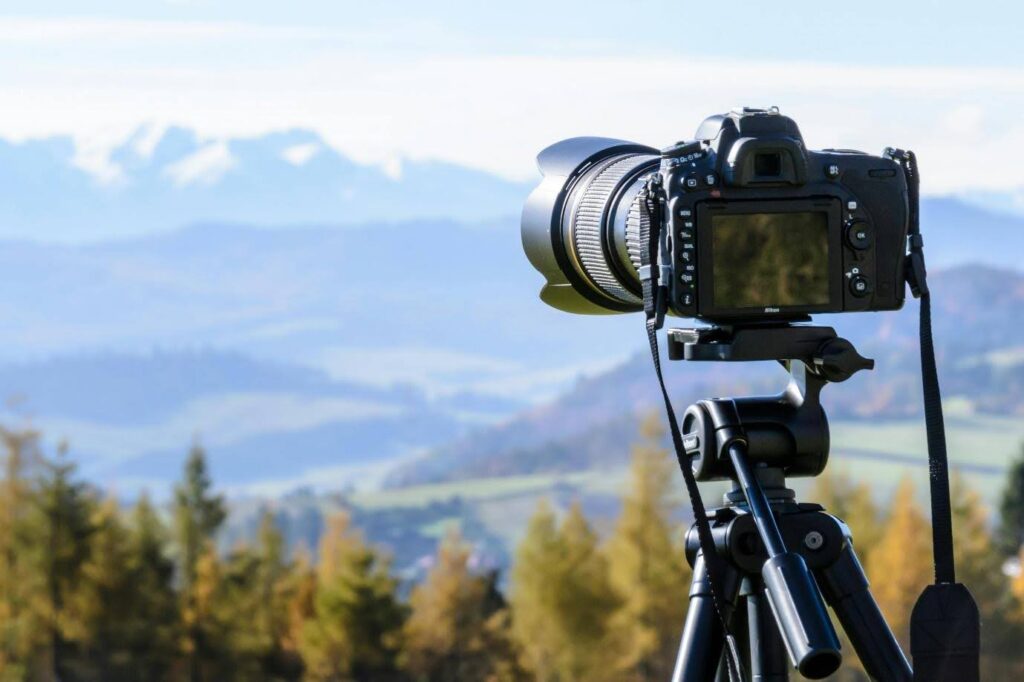
2. Communication and Leadership
A film crew is made up of multiple moving parts, and that means collaboration is key! It’s no good having lots of amazing ideas if you can’t communicate them well. You’ll need to clearly articulate your ideas to teams from various departments as well as pitch and defend those to producers and other stakeholders.
With so many people contributing, there are bound to be disagreements, so it’ll be up to you as the creative director to resolve any conflict and be flexible.
3. Technical Know-How
Film technology is advancing all the time, so you’ll need to be familiar with it! This includes everything from storyboarding software and 3D modelling programs to full-blown editing suites such as Adobe Premiere and DaVinci Resolve.
And it doesn’t stop there! Visual tone also depends a lot on lighting, camera lenses and camera movement, so you’ll need to fully understand these too.
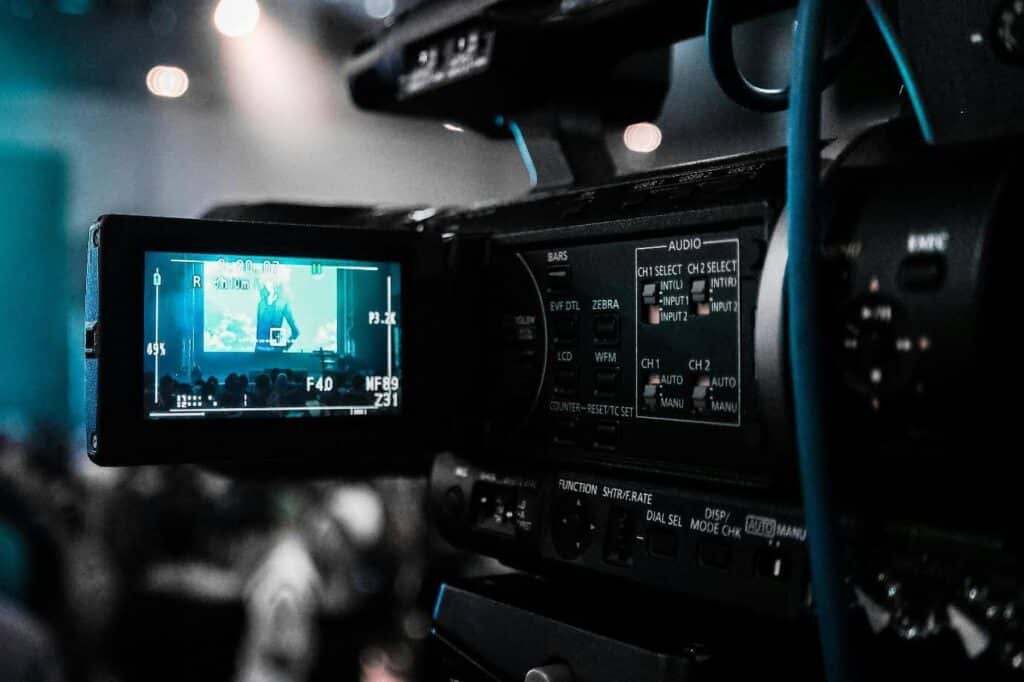
4. Emotional Intelligence
As creative director, your work will be seen by others, so you also need to be attuned to how your visual choices will affect the audience’s emotions and how they interpret the story being told.
Creative director for Patagonia, Alex Lowther, spoke to Hence Creative about the production company’s vision and how it hasn’t deferred from it since its founding in 1973.
There’s no shortcut to properly capture the gritty realism that has always been Patagonia’s visual feel. Whether it’s a documentary narrative or a more commercial project, our preferred approach to filmmaking tends toward verité. We want to capture something that’s actually happening. Acting is verboten. And we don’t mess with makeup or other kinds of artifice in film. The set comes together on its own on the eighth day in the backcountry, the third day on the wall, somewhere in mile 30 of the ultrarun. You have to put the field work in to get that type of footage. – Alex Lowther, Creative Director for Patagonia (Hence Creative interview, 2024)
In short, sensitivity to narrative context and character development is crucial.
Celtx supports screenwriters, storytellers, and creatives of all kinds.
Join today — it’s free to start
BONUS: Do I need to go to film school to become a creative director?
While formal education can give you valuable insight into the film industry and the different roles you can pursue, it isn’t always necessary.
Many creative directors have come from other professions, or roles within film. These include:
- Film production
- Fine arts
- Graphic design
- Architecture
- Animation
Lucky for us, there’s many one-stop shops for all roles within the film industry. Check out Mandy.com or ProductionHub (we highly recommend setting up a profile too!)
Creative Director Career Paths: Education, Networking & Growth
Like many jobs in the film industry, there’s no one way to becoming a creative director. What is guaranteed though is the journey which often involves years of experience, building a diverse portfolio of work, and making your mark on the industry through connections.
So, what could your journey to creative director look like?
1. Education and Early Experience
If you decide to go down the formal education route, you don’t necessarily have to apply to film school. There are many degrees that are relevant to the creative director role, all creative of course.
Creative director and VFX supervisor, George Murphy, who began his career on Hook in 1991, talked of how his career panned out differently than he imagined:
“I started out fully intending to be a freelance photojournalist, covering the real world. In an odd way, it was those skills in capturing reality that prepared me for fabricating worlds that don’t exist.” – George Murphy (Hollywood Reporter, 2024)
You could secure a degree in film and media arts, but also in design, architecture, fine arts or even illustration. From there, many aspiring creative directors will begin in junior positions such as art department assistants, set designers, storyboard artists, or production assistants.
These roles all have one thing in common – they’re hands-on and contributing directly to the movie’s overall vision, and that’s what counts!
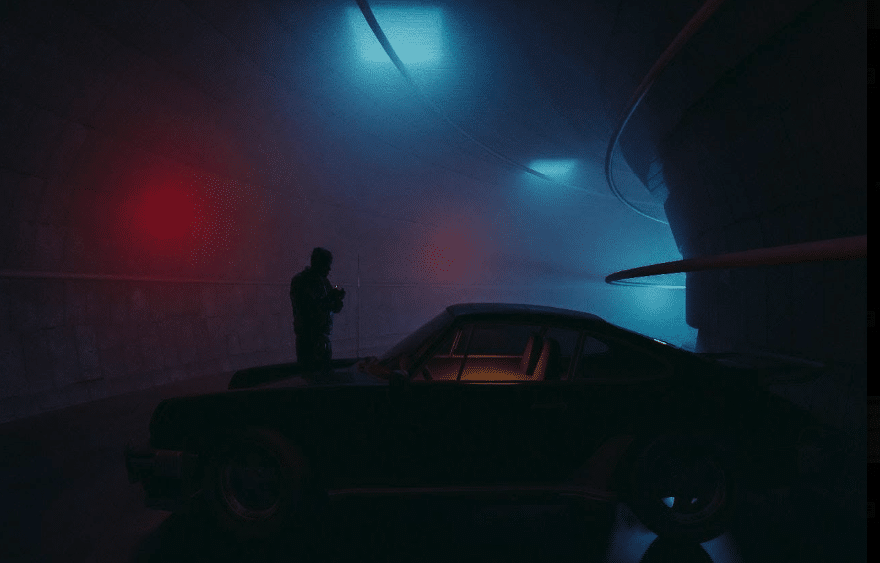
2. Making Your Mark
Career progression in the film industry is often based on reputation, a hella lot of networking and of course, creativity. As you move up the ranks, you could consider a new role as art director, visual development lead, or assistant production designer.
It’s all about building a portfolio of work and trusted contacts to prove yourself capable of taking on the responsibilities of creative director.
3. Networking, Networking, Networking
If you’ve read the Celtx blog for a while, you’ll know that networking is one of our favorite words. It summarizes what the film world is all about, and you’ll need to get used to it if you’re looking to pursue a career.
Don’t worry, it may seem terrifying at first, but it’s essential to making yourself known and giving yourself the best opportunities to thrive. Plus, you may make some firm friends along the way.

Where can you network? Well, aspiring creative directors will often attend industry events, film festivals and trade shows. We also recommend building a personal website or portfolio to showcase your broad design experience.
Collaborations can also be a terrific way of putting your name on the map! Work on indie films, music videos or commercials to build credits and gain experience.
Conclusion
The creative director in film is both a visionary and a pragmatist: someone who dreams big but works with their feet firmly on the ground. They hold a unique position that ties together the visual, emotional, and narrative threads of a production.
While the role may not be as public facing as the film’s director or as glamorized as an actor, the creative director’s influence is felt in every scene. From mind-blowing fantasy worlds to the intimate color grading of a romantic drama, their work guides the audience’s emotional journey.
If you’re someone with a passion for visual storytelling, a friendly collaborator, and a keen eye for detail, the path of a creative director might be your ideal role in the film industry.
Want to bring your creative vision to life? Celtx makes it easy to collaborate, plan,
and guide every element of production — from script to screen.
Start your next project with Celtx.
Find your dream role in the film industry:
- What Does a Film Production Manager Do?
- How to Become a Producer in Film and TV
- What is a Cinematographer, and What Do They Do?
